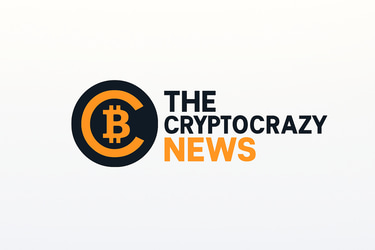Solana and Litecoin ETFs Debut on Wall Street; Crypto Integration into Traditional Finance Gains Momentum
In a historic leap for the digital assets space, Solana (SOL) and Litecoin (LTC) have formally set foot on Wall Street via newly listed exchange-traded funds (ETFs). This development is a significant leap towards closing the gap between conventional finance and the world of cryptocurrencies, providing institutional and retail investors with simpler, regulated access to two of the most mature blockchain assets outside Bitcoin and Ethereum.
10/28/20252 min read


ETFs Signal Mainstream Recognition for Solana and Litecoin
The launch of Solana and Litecoin ETFs is indicative of increasing institutional belief in the long-term success of such networks. Following the success of Bitcoin and Ethereum spot ETFs, financial institutions have been quite keen to launch other high-potential crypto assets. Solana with its speedy transactions and low charges and Litecoin for its stability and robust security history are both deemed as promising candidates for mass acceptance.
Industry experts say that the approval is an indication that regulators and large asset managers are becoming increasingly comfortable with adding diversified digital assets to conventional portfolios. It offers exposure to the crypto market without the requirements for managing private keys or wallets, thus lowering entry costs for new players.
Institutional Interest and Market Reactions
Upon the ETF announcement, both SOL and LTC experienced instant price hikes, with trading volumes surging across leading exchanges. Institutional players have received the news positively, seeing it as a signal that the market is growing up and increasingly being absorbed into mainstream finance.
Solana's robust decentralized application (dApps) and NFT marketplace ecosystem, combined with its growing partnerships in Web3 gaming and DeFi, has drawn steady developer and investor traffic. At the same time, Litecoin's status as the "digital silver" to Bitcoin's "digital gold" continues to make it a solid store of value and medium of exchange — an attractive combination for conservative investors who are new to crypto.
Wall Street's Increasing Appetite for Digital Assets
The rollout of Solana and Litecoin ETFs is the latest move in a series of developments highlighting Wall Street's increasing demand for crypto exposure. As major players such as BlackRock, Fidelity, and VanEck move into the sector, mainstream finance seems to be at the beginning of a long-term drift toward blockchain-based assets.
These ETFs enable regulated institutions — such as pension funds, mutual funds, and wealth managers — to access the crypto market under familiar compliance frameworks. This innovation could dramatically boost liquidity and market depth for Solana and Litecoin, opening the door to more stable price behavior and greater investor confidence.
Regulatory Momentum and Broader Implications
The regulatory go-ahead for these ETFs is also a significant precedent for future crypto-based financial instruments. While governments and financial regulators continue to craft digital asset policies, the approval of Solana and Litecoin ETFs is an indicator that regulators are open to innovation under responsible terms.
They predict additional crypto-linked ETFs to emerge, and potentially assets like Cardano, Avalanche, and Chainlink — each with their own use cases that institutional investors find compelling.
Conclusion
Solana and Litecoin ETFs launch on Wall Street is more than simply another market development — it's a milestone on crypto's path toward mass financial adoption. In offering mainstream investors safe and regulated access to top blockchain networks, these ETFs may legitimize the wider crypto universe while driving long-term flows of capital.
As Wall Street comes of age for digital assets, the boundary between traditional finance (TradFi) and decentralized finance (DeFi) gets increasingly fuzzy — paves the way for a more networked global financial world.
